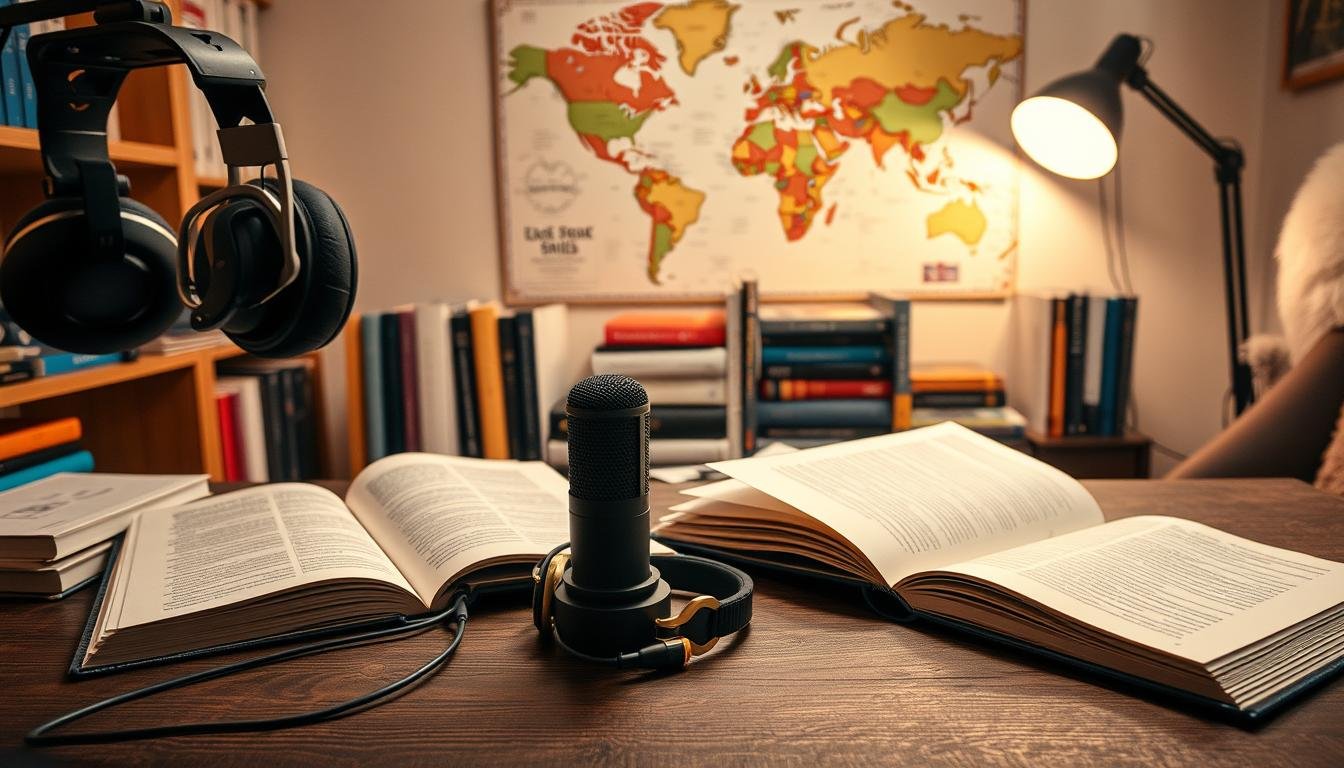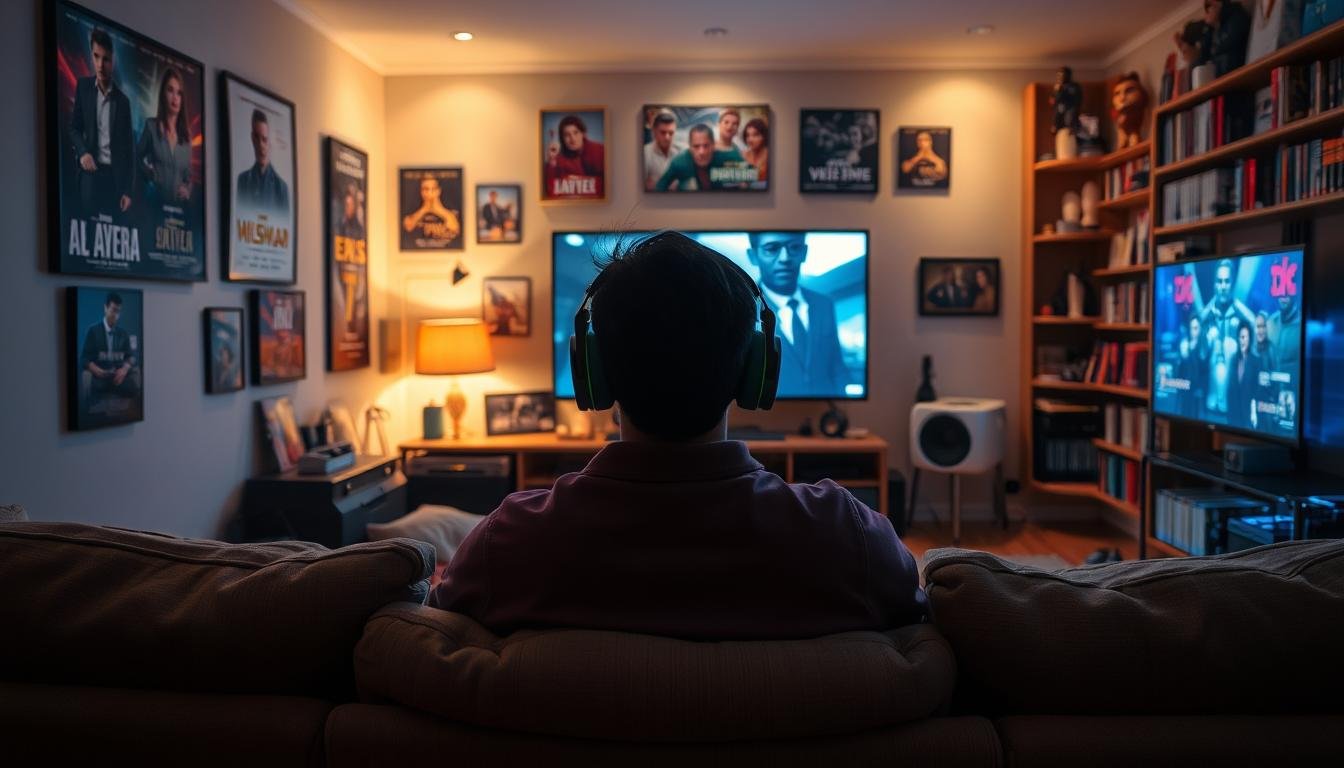Now Reading: Why You Struggle with Fast Native Speakers & How to Fix It
-
01
Why You Struggle with Fast Native Speakers & How to Fix It
Why You Struggle with Fast Native Speakers & How to Fix It

Why You Struggle with Fast Native Speakers & How to Fix It
Understanding native speakers can be a challenging task, especially when they speak quickly. Improving your listening skills is crucial to overcome this hurdle. In this article, we will explore the common difficulties faced by non-native listeners and provide practical solutions to enhance your comprehension.

Many individuals struggle to keep up with fast native speakers, which can hinder their ability to grasp the nuances of the language. This can be attributed to various factors, including the speaker’s rate of speech, accent, and vocabulary.
Key Takeaways
- Identify the challenges you face when listening to native speakers.
- Practice active listening to improve your comprehension.
- Focus on the speaker’s rate of speech and its impact on your understanding.
- Develop strategies to overcome the difficulties associated with fast native speakers.
- Enhance your listening skills through targeted practice and exposure to different accents and speaking styles.
The Challenge of Understanding Native Speakers
Understanding native speakers can be a daunting task for non-native speakers. The speed at which native speakers converse can be overwhelming, making it difficult to follow conversations.
Common Frustrations and Experiences
Many language learners struggle to comprehend native speakers due to the fast pace of their speech. This can lead to frustration and anxiety in conversations. The inability to understand native speakers can result in avoidance behaviors, where learners may shy away from engaging in conversations with native speakers.
Anxiety in Conversations
The anxiety caused by not understanding native speakers can be significant. It can lead to avoidance behaviors and hinder the development of language skills.
Avoidance Behaviors
Avoidance behaviors can be a significant obstacle for language learners. By avoiding conversations with native speakers, learners may miss out on valuable opportunities to improve their language skills.
Effective communication is crucial in overcoming these challenges. Active listening and effective communication are essential skills for language learners to master.
By improving active listening and effective communication skills, language learners can enhance their ability to understand native speakers and engage in meaningful conversations.
The Science Behind Listening Skills
Understanding spoken language is a complex cognitive process that involves multiple aspects of brain function. The ability to comprehend spoken language is closely linked to the way the brain processes auditory information.
How the Brain Processes Language
The human brain is wired to process language in a hierarchical manner, starting from basic auditory processing mechanisms to higher-level linguistic comprehension. The initial processing of auditory information occurs in the primary auditory cortex, where the brain analyzes the acoustic characteristics of speech, such as pitch, tone, and rhythm.
Auditory Processing Mechanisms
The brain’s auditory processing mechanisms play a crucial role in language comprehension. The processing of phonological, syntactic, and semantic information is essential for understanding spoken language. Phonological processing involves the analysis of sound patterns, while syntactic processing involves the analysis of grammatical structures. Semantic processing, on the other hand, involves the extraction of meaning from linguistic input.
Language Acquisition Differences
Individual differences in language acquisition and processing can significantly impact listening comprehension. Factors such as age, cognitive abilities, and prior language experience influence how individuals process and comprehend spoken language. For instance, older adults may experience decline in auditory processing abilities, while non-native speakers may face challenges related to accent and linguistic background.
The Gap Between Comprehension and Production
The gap between comprehension and production is a critical aspect of language processing. While comprehension refers to the ability to understand spoken language, production involves the ability to generate spoken language. The disparity between these two abilities can be significant, and empathetic listening plays a vital role in bridging this gap.
Empathetic listening is essential for effective communication, as it enables listeners to better understand the speaker’s intended meaning and adjust their listening strategies accordingly. By adopting an empathetic listening approach, language learners can improve their comprehension and production abilities, ultimately enhancing their overall communication skills.
Why Native Speakers Sound “Too Fast”
Native speakers often sound too fast to non-native speakers due to several factors that contribute to this perception. Understanding these factors is crucial for language learners to improve their listening skills.
Connected Speech and Reduction
Connected speech refers to the way words are linked together in spoken language, often resulting in reduced forms of words or phrases. This can make it difficult for non-native speakers to understand native speakers.
Contractions and Elisions
Contractions and elisions are common features of connected speech. For example, “do not” is often contracted to “don’t,” and “going to” becomes “gonna.” These reductions can make it challenging for language learners to follow native speakers.
Weak Forms of Function Words
Function words like “the,” “a,” “to,” and “of” often have weak forms in connected speech. For instance, “to” is often pronounced more like “t'” or “ta” in informal speech. Recognizing these weak forms is essential for improving listening skills.
Cultural and Regional Variations
Cultural and regional variations in language can also affect how native speakers sound to non-native listeners. Different accents, dialects, and idiomatic expressions can be confusing for language learners.
Idiomatic Expressions and Slang
Idiomatic expressions and slang are common in native speaker interactions. Understanding these expressions is vital for effective communication. Nonverbal communication, such as body language and tone of voice, also plays a significant role in conveying meaning.
By understanding the factors that contribute to the perception that native speakers sound “too fast,” language learners can take steps to improve their listening skills and better comprehend native speakers.
Fundamental Listening Skills for Language Learners
Effective listening is a crucial skill for language learners, and it involves a combination of skills that work together to facilitate comprehension.
Bottom-up vs. Top-down Processing
Listening comprehension involves two primary processing modes: bottom-up and top-down. Bottom-up processing refers to the ability to recognize and interpret the individual components of speech, such as phonemes, words, and grammatical structures.
Predictive Listening Strategies
Predictive listening strategies play a vital role in facilitating comprehension. These strategies involve making predictions about upcoming speech based on prior knowledge, context, and linguistic cues.
Recognizing Speech Patterns
Recognizing speech patterns is essential for effective listening. This involves identifying and interpreting various aspects of speech, including stress and intonation patterns, as well as rhythm and timing.
Stress and Intonation Patterns
Rhythm and Timing
The rhythm and timing of speech also play a significant role in comprehension. The rhythmic pattern of speech, including the duration and pause patterns, can influence how listeners process and retain information.
Practical Techniques for Improved Comprehensi
### Enhancing Listening Skills through Effective Methods
Improving listening comprehension is a crucial aspect of language learning. In this section, we will explore practical techniques to enhance your listening skills, enabling you to better understand native speakers and improve your overall language proficiency.
#### Shadowing Method
The shadowing method involves listening to a native speaker and repeating what they say. This technique helps you develop your listening skills by mimicking the pronunciation, intonation, and rhythm of native speakers.
##### Step-by-Step Implementation
1. Choose a Resource: Select a video, podcast, or audio recording that is slightly above your current level of proficiency.
2. Listen and Repeat: Listen to the chosen resource and repeat what the speaker says. Try to mimic their pronunciation, intonation, and rhythm.
3. Practice Regularly: Make shadowing a regular practice by setting aside time each day or week to listen and repeat.
##### Common Mistakes to Avoid
* Don’t be too hard on yourself if you can’t understand everything at once.
* Be patient with yourself and remember that it’s okay to make mistakes.
#### Dictation Practice
Dictation practice involves listening to a passage and writing down what you hear. This technique helps improve your listening and writing skills by forcing you to pay attention to the speaker’s words.
#### The Pause-Replay Technique
The pause-replay technique involves pausing the audio or video at regular intervals to replay and re-listen to the content. This technique helps you to better understand and retain the information by giving you time to process and review what you’ve heard.
By incorporating these techniques into your language learning routine, you can significantly improve your listening comprehension and develop a more nuanced understanding of native speakers. Regular practice and consistent exposure to authentic materials will help you become a more proficient listener.

Training Your Ear: Daily Exercises
To improve your listening skills, it’s essential to engage in regular practice. Here, we’ll outline a series of daily exercises tailored to help you enhance your listening abilities.
Short-Burst Listening Activities
Engage in short-burst listening activities to improve your ability to focus on specific aspects of speech. These activities involve listening to short clips or audio snippets, allowing you to concentrate on particular features of language.
- Listen to Podcasts: Choose podcasts that interest you and listen to them regularly. This will help you get accustomed to different accents, speaking styles, and conversational rhythms.
- Audio Snippets: Listen to short audio clips that highlight specific language features, such as idiomatic expressions, phrasal verbs, or pronunciation patterns.
Progressive Speed Training
Gradually increase the difficulty level of your listening practice by incorporating progressive speed training.
- Start with Slower Speech: Begin with slower speech or audio materials that are spoken at a slower pace. This will help you get used to the sounds, intonation, and rhythm of the language.
- Gradually Increase Difficulty: As you become more comfortable, gradually increase the speed of the speech or audio materials. This will challenge your listening skills and help you improve your ability to comprehend faster speech.
Focused Feature Recognition
Practice focused feature recognition by paying attention to specific aspects of language.
- Identify Key Features: Listen for key features such as stress patterns, intonation, or specific vocabulary.
- Recognize and Repeat: Repeat what you’ve listened to, and try to recognize the features you’ve identified.
By incorporating these daily exercises into your routine, you’ll be able to improve your listening skills and become a more attentive listener.
Leveraging Technology for Listening Practice
Technology has revolutionized the way we learn languages, and listening skills are no exception. With the advent of various digital tools and platforms, learners can now access a wealth of resources to improve their listening abilities.
Apps and Tools for Slowing Down Speech
Several apps are designed to help language learners by slowing down native speakers’ speech. These apps often provide adjustable playback speeds, allowing users to gradually increase their listening speed as they become more comfortable.
- Speechling: An app that allows users to slow down or speed up audio and video content.
- Language learning platforms: Many online platforms offer adjustable playback speeds for audio and video content, catering to different proficiency levels.
Podcasts and Audio Resources
Podcasts have become an invaluable resource for language learners, offering a wide range of topics and listening materials. Many podcasts are designed with language learners in mind, providing transcripts and adjustable playback speeds.
Beginner-Friendly Options
For beginners, it’s essential to start with materials that are tailored to their level. Many resources offer content that is specifically designed for beginners, with simpler vocabulary and slower playback speeds.
Advanced Content Selection
As learners progress, they can gradually move on to more advanced content, including podcasts and audio materials that challenge their listening skills.
Video Content with Subtitles
Video content with subtitles is another valuable resource for language learners. Subtitles can help learners improve their listening skills by providing a visual aid to accompany the audio.

By leveraging technology, language learners can significantly improve their listening skills. With the right tools and resources, learners can practice active listening and develop a more nuanced understanding of the language.
Real-World Practice Strategies
Engaging in conversations with native speakers is one of the most effective ways to improve your listening skills. By interacting with people who are fluent in the language, you can develop your ability to understand different accents, idioms, and expressions.
Conversation Partners and Language Exchanges
Language exchange websites and apps can connect you with potential conversation partners. You can also join language exchange events or conversation clubs in your local area.
Immersion Techniques
Immersion techniques involve surrounding yourself with the language you are learning. This can be achieved through various methods, including watching TV shows and movies, listening to podcasts, and reading books in the target language.
Creating Mini-Immersion Environments
To create a mini-immersion environment, you can set up a language learning space that simulates real-life situations. This can be done by playing language learning games, cooking recipes in the target language, or even labeling objects around your house with their corresponding vocabulary.
Maximizing Exposure Opportunities
To maximize your exposure to the language, it’s essential to seek out opportunities to use it in real-life situations. This can involve speaking with native speakers, watching TV shows or movies, or listening to music in the target language.
Structured vs. Unstructured Practice
While structured practice provides a framework for learning, unstructured practice allows you to explore the language in a more flexible and spontaneous way. Unstructured practice involves engaging in conversations, listening to native speakers, and using the language in context.
Overcoming Psychological Barriers:
### Managing Anxiety and Frustration
When learning a new language, one of the significant hurdles is overcoming the psychological barriers that hinder listening skills improvement. Anxiety and frustration are common emotions experienced by language learners when faced with the challenge of understanding native speakers. These feelings can stem from various factors, including the fear of making mistakes, the pressure to perform well, and the discomfort of not being able to comprehend spoken language.
### Building Confidence Through Small Wins
To overcome these psychological barriers, it’s essential to focus on building confidence through small wins. By achieving small victories in your language learning journey, you can develop a sense of accomplishment and motivation to continue improving. This can be achieved by setting realistic goals, practicing consistently, and celebrating your progress along the way.
### The Growth Mindset Approach
Adopting a growth mindset is crucial in overcoming psychological barriers. By embracing challenges as opportunities for growth, you can develop a more resilient and adaptive approach to language learning. This involves being open to new experiences, persisting in the face of obstacles, and viewing failures as stepping stones for improvement.
#### Reframing Challenges as Opportunities
By reframing challenges as opportunities, you can shift your focus from the difficulties to the possibilities. This mindset allows you to view obstacles as chances to learn and improve, rather than as insurmountable barriers. As you progress in your language learning journey, you’ll become more adept at recognizing and capitalizing on these opportunities.
#### Learning from Mistakes
Learning from mistakes is an essential aspect of the language learning process. By acknowledging and analyzing your errors, you can gain valuable insights into your strengths and weaknesses. This self-reflection enables you to refine your skills, address areas of improvement, and develop more effective learning strategies.
Effective language learning involves a combination of these factors, including managing anxiety and frustration, building confidence, adopting a growth mindset, reframing challenges, and learning from mistakes. By incorporating these elements, you can create a comprehensive approach to overcoming psychological barriers and improving your listening skills.
When it comes to nonverbal communication and verbal cues, they play a significant role in shaping our understanding of spoken language. Nonverbal cues, such as body language and tone of voice, provide essential context for interpreting the meaning of spoken words. Verbal cues, including linguistic features like prosody and syntax, help to convey the nuances of language and facilitate comprehension.
By being aware of these aspects, you can better navigate the complexities of spoken language and develop a more nuanced understanding of the psychological factors that influence language learning. This, in turn, will help you to overcome the psychological barriers that hinder your listening skills improvement, ultimately leading to more effective language acquisition and a more confident use of the language.
Measuring Progress in Your Listening Skills
To improve your listening skills, it’s essential to track your progress and adjust your learning plan accordingly. Here, we will discuss the key aspects of measuring progress and creating a personalized improvement plan.
Benchmarking Your Listening Abilities
Assessing your current listening abilities is a crucial step in identifying areas that require improvement. By benchmarking your skills, you can pinpoint your strengths and weaknesses, allowing you to focus on the aspects that need the most attention.
Creating a Personalized Improvement Plan
Once you have assessed your listening abilities, the next step is to create a tailored improvement plan. This involves setting both short-term and long-term goals, ensuring that your learning objectives are realistic and achievable.
Short-term Goals
Short-term goals are specific, achievable targets that you aim to accomplish within a relatively short period. These goals might include improving your ability to understand native speakers, enhancing your comprehension of idiomatic expressions, or increasing your vocabulary.
Long-term Objectives
Long-term objectives, on the other hand, are broader and more ambitious. They involve sustained efforts to develop your listening skills over time, such as improving your ability to follow complex conversations or understanding various accents and dialects.
Recognizing and Celebrating Improvement
As you work on your listening skills, it’s essential to acknowledge and celebrate your progress. Recognizing your achievements will help motivate you to continue improving and provide a sense of accomplishment, which is a crucial aspect of the learning process.
By regularly assessing your listening abilities and adjusting your improvement plan, you can ensure continuous progress and develop the skills necessary to effectively understand native speakers.
Conclusion
In conclusion, improving your listening skills is a crucial aspect of language learning. Throughout this article, we have explored various strategies and techniques to enhance your ability to understand native speakers. By implementing the practices outlined in the previous sections, you can significantly improve your comprehension and become more confident in your listening abilities.
To summarize, the key to overcoming the challenges of understanding native speakers lies in consistent practice, leveraging technology, and adopting a growth mindset. By doing so, you can bridge the gap between your current level of comprehension and your desired level of proficiency.
Effective listening skills are essential for language learners, and with the right approach, you can achieve significant improvements. We encourage you to continue practicing and refining your listening skills to become a proficient listener.
By applying the techniques and strategies discussed in this article, you will be well on your way to improving your listening skills and becoming more proficient in understanding native speakers.
## FAQ
### Q: What are the most common challenges faced by non-native speakers when trying to understand native speakers?
A: Non-native speakers often struggle to understand native speakers due to various factors, including differences in pronunciation, vocabulary, grammar, and cultural references. The speed at which native speakers communicate can also be a significant barrier.
### Q: How can I improve my listening skills to better understand native speakers?
A: Improving listening skills requires practice, patience, and exposure to various listening materials, such as podcasts, videos, and conversations with native speakers. Active listening, attentive listening, and effective communication are essential for overcoming the challenges.
### Q: What role does technology play in enhancing listening skills?
A: Technology can be a valuable tool for improving listening skills, offering a range of resources, including apps, podcasts, and video content with subtitles. Leveraging technology can help learners slow down speech, access beginner-friendly content, and track their progress.
### Q: How can I measure my progress in listening skills?
A: Measuring progress involves benchmarking current listening abilities, setting realistic goals, and tracking improvement over time. Creating a personalized improvement plan and recognizing small wins can help build confidence and motivation.
### Q: What are some effective techniques for improving listening comprehension?
A: Techniques such as shadowing, dictation practice, and the pause-replay method can be effective in improving listening comprehension. Additionally, strategies like predictive listening, focused feature recognition, and progressive speed training can enhance listening skills.
### Q: How can I overcome psychological barriers to improving my listening skills?
A: Overcoming psychological barriers requires managing anxiety and frustration, building confidence through small wins, and adopting a growth mindset. Recognizing and reframing challenges as opportunities for growth can help learners stay motivated and engaged.
### Q: What is the role of nonverbal communication in understanding native speakers?
A: Nonverbal communication, including body language, facial expressions, and tone of voice, plays a significant role in understanding native speakers. Being aware of these cues can help learners improve their comprehension and communication skills.
### Q: How can I apply the knowledge gained from this FAQ to improve my listening skills?
A: By applying the knowledge and techniques outlined in this FAQ, learners can develop a more nuanced understanding of native speakers and improve their listening skills. Consistent practice, patience, and exposure to diverse listening materials are key to achieving this goal.






























